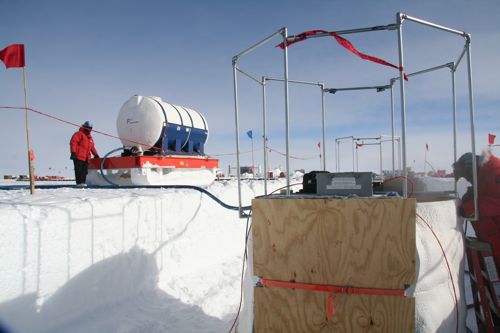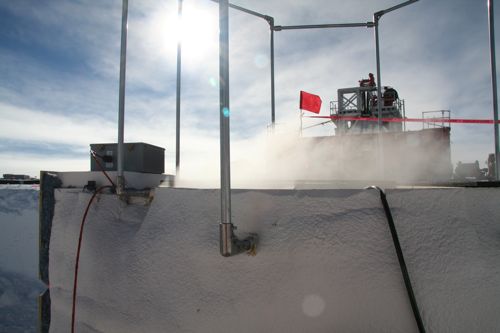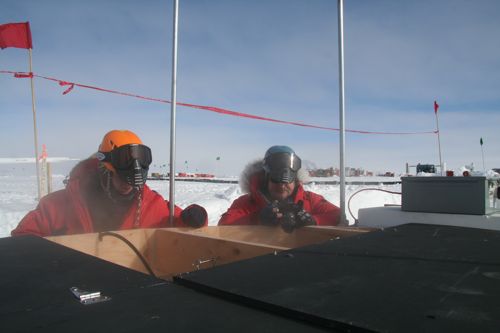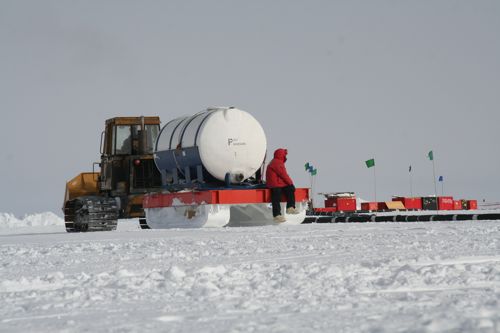Yesterday was a breeze in terms of filling the IceTop tanks. Today was another story entirely! Everything seemed to go wrong.
The first minor issue came when we found that one of the IceTop tanks had a layer of dirt and ice in the bottom. When we fill the tanks to be frozen, any dirt can cloud the water causing problems for the sensors. No problem, clean it out, right? but the dirt had frozen into a tough layer on the bottom, and we'd need to get in with some hot water and scrub it out fast. Before we could do this, however, we ran into another problem.
The second big hiccup came when we hooked up a set of the Freeze Control Units and found they did not communicate back to the main control computer. They are able to run on automatic mode for now, but for gathering data we still need to figure out this problem.
The biggest difficulty became apparent when we found that the hose, used to fill the tanks, had frozen solid with ice inside. A frozen hose doesn't seem so bad, except that it's (a) about 10 meters long, (b) insulated so it is much harder to thaw, and (c) everything is at a temperature of -30°C.
We took the hose and placed it into one of the warm water tanks used for drilling the 1.5 mile deep holes. We left it there for about 30 minutes and then pulled it out, and as we opened it, lots of water came out! hooray, we were saved. But by the time we got the hose back out into the field, hooked it up, and tried to use it, we found that there were still ice blockages inside. And that the valve on the water tank had also frozen! So, after another half hour with heat guns, to no avail, we gave up on this for the day.
We are all hoping for better luck (and a thawed fill hose) tomorrow! In reality, though, setbacks like this are not uncommon. Science, and life, is rarely a story of unimpeded success - most major, and minor for that matter, scientific discoveries are based on trial and error and error and error. So, despite the frustrations of today, we will power through and feel confident that we will get it right (eventually...)
A few photos to entertain you in the mean time. Note that these photos are all of a successful fill day - i.e., yesterday, not today!




Unrelated note, about the weather: This afternoon was the first time I'd seen a "white out" here - not blizzard conditions or anything, but just a white haze that obscured objects beyond a kilometer or so, and made it seem like the whole world had disappeared. Very cool, as long as I was warm inside. Very confusing and potentially dangerous if I had been outside trying to make it back to the station.


Comments